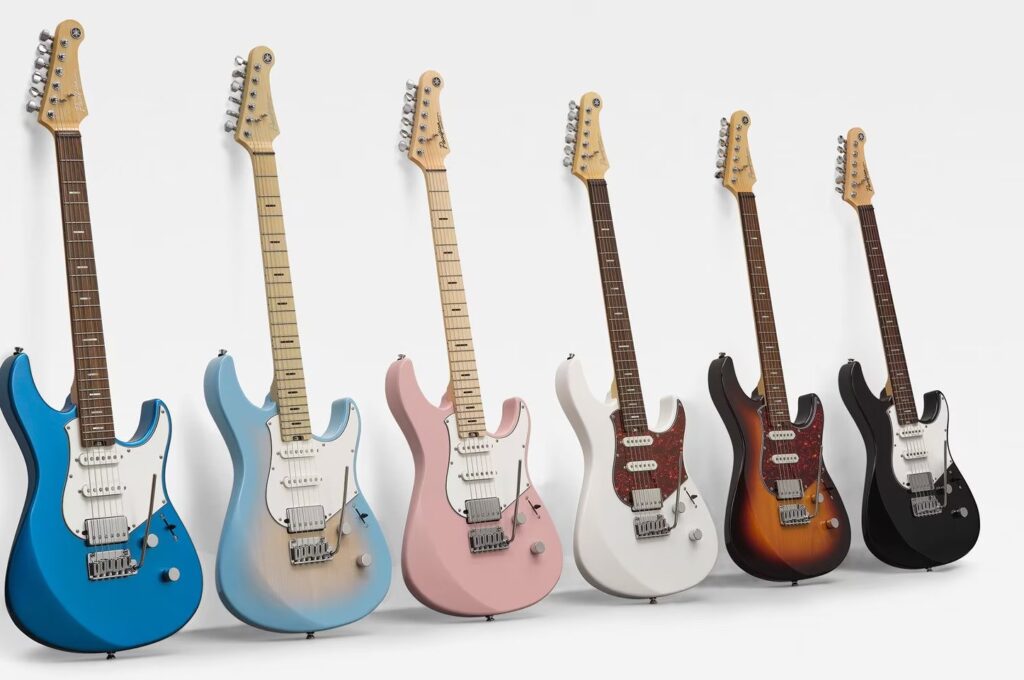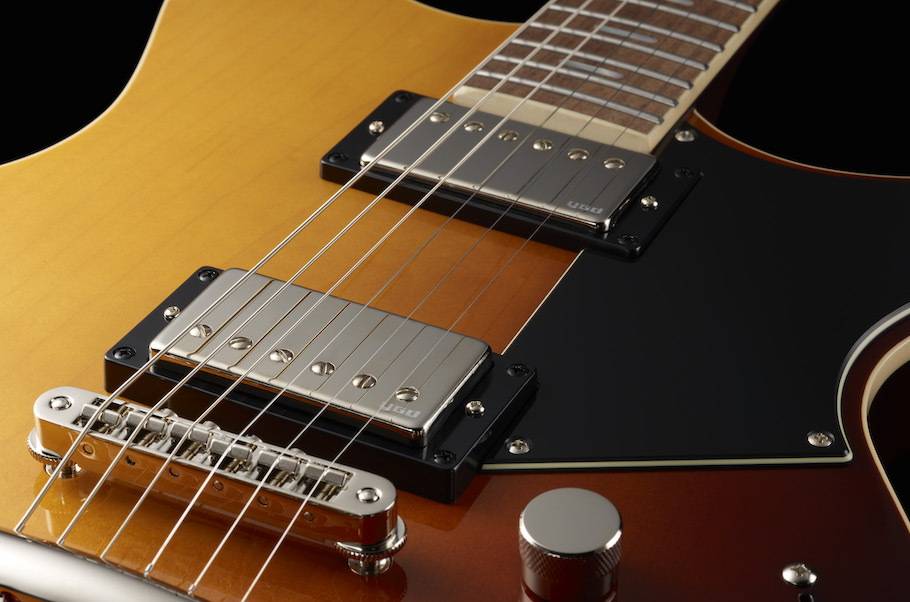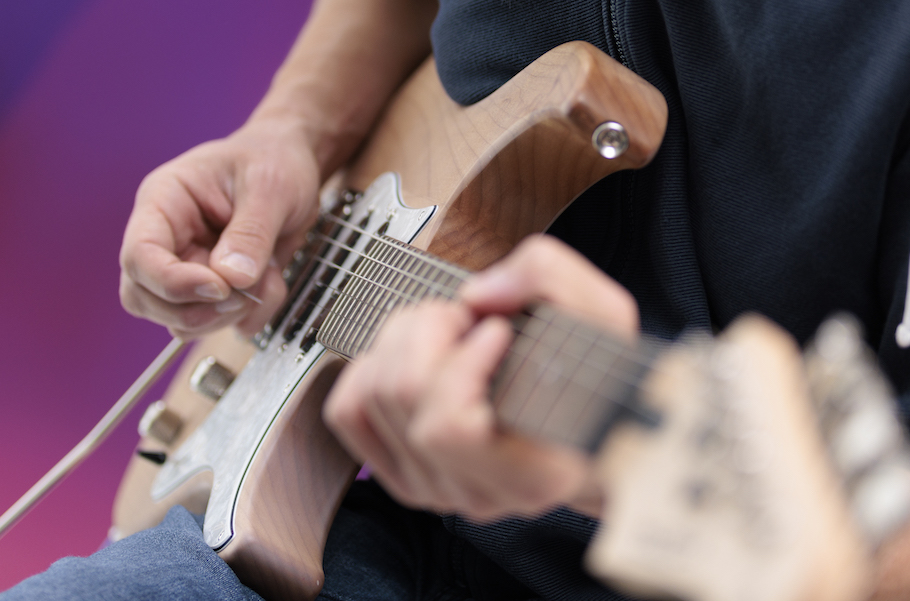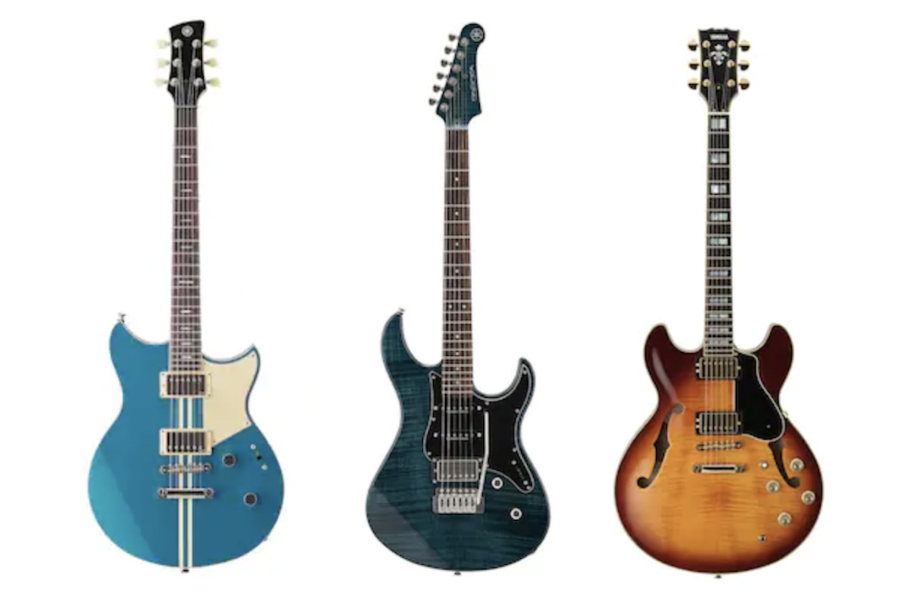Neck and Neck
When it comes to electric guitars, are all instruments equal?
I tend to buy footwear based on the functionality, fit, comfort, color and (being the diva that I am) how they look!
Running shoes need to provide cushioned support, while deck shoes are great for my live performances because they are flat and allow me to feel the pedalboard beneath my feet when I’m looping. Dress shoes or boots need to work with my wardrobe and (limited) sense of style. Comfort is a plus, but not a prerequisite.
What does any of this have to do with guitars? Well, we take considerable time selecting the appropriate shoe for every occasion, but do we make similar considerations when choosing our guitars? You know, those expensive instruments we covet and adore with our eyes, ears, and more importantly, our hands!
In this installment of The Calvo Report, I thought it would be interesting to explore the anatomy of the electric guitar neck and take a closer look at some of the choices we have (and may not have even considered) when choosing a new instrument.
Neck Tonewoods
Maple and mahogany are extremely strong and stable tonewoods, making them great choices for guitar necks. Roasting the maple is a great way to add additional strength, and the resulting vintage hue is extremely pleasing to the eye, especially when birds-eye, curly or flamed varieties are used.
Fingerboard Tonewoods

A fingerboard (sometimes called a fretboard) is glued on top of the guitar neck. Ebony, rosewood and maple are some of the most popular fingerboard tonewoods. Maple fingerboards tend to have satin or gloss finishes while rosewood and ebony are generally left unfinished with open wood grain. I prefer the darker tonewoods, as they look better on camera for my video lessons, plus it’s easier to see what the fingers are doing against those backdrops. There may also be slight tonal variances between the three, but I’m not sure even the most astute listener could identify the difference between the three fingerboard materials in a “blindfold” test.
Fingerboard Radius
This refers to the positive camber (convex or arch shape) of the fingerboard from the low E-string to the high-E string. This is an extremely important detail to pay attention to when choosing a guitar. Vintage instruments typically have a 7″ or 9″ radius. These guitars often feel great for chordal playing, but careful attention needs to be paid to fretwork in the upper regions of the neck to make sure bends remain clean without choking off. Many modern guitars have a 10″, 12″ or even 13″ radius. These flatter cambers are often better for playing slide guitar in standard tuning as well as clean, uninterrupted bending in the higher regions of the neck.
Compound radius fingerboards are common too. For example, the radius at the nut may start at 10″ and gradually flatten out to a 16″ camber in the upper regions of the fingerboard. Various compound ratios are available and can be customized to your preferences by a luthier.
Fret Wire
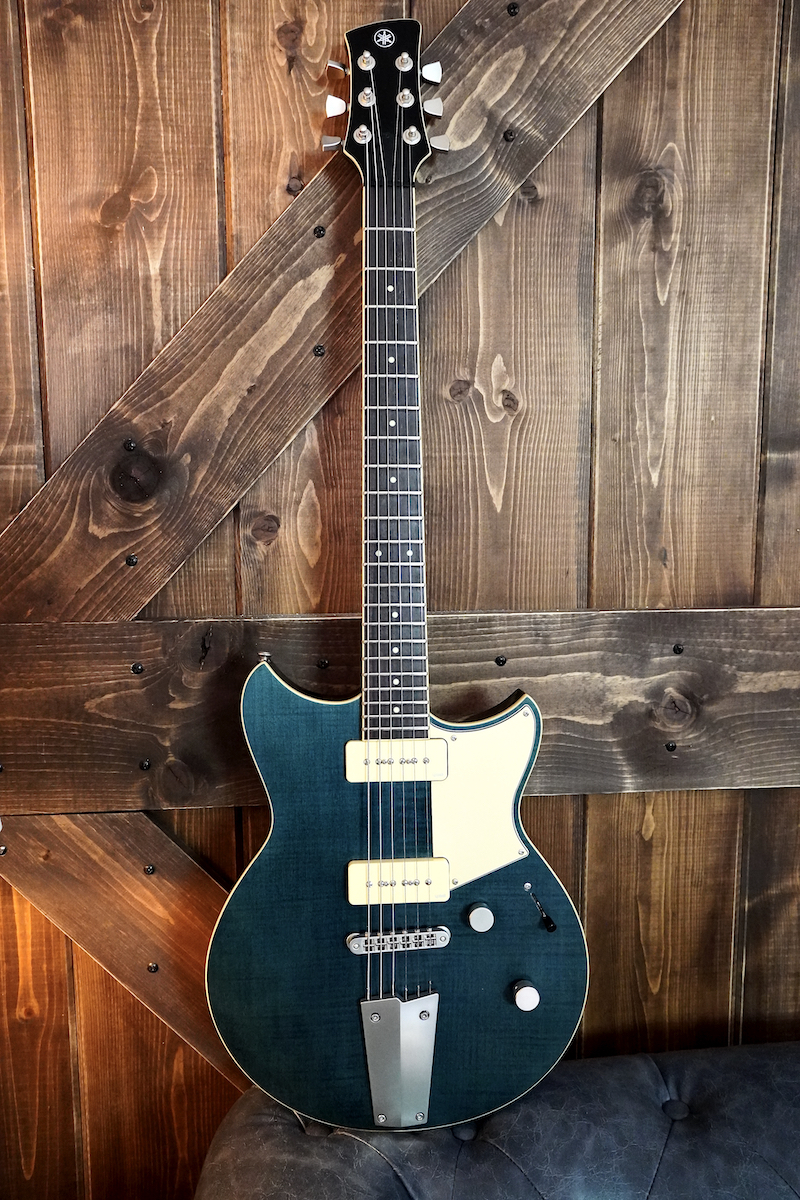
Frets are usually made from “nickel silver” (an alloy that doesn’t actually contain any silver) or stainless steel, and they come in a variety of heights and widths. This may be one of the most important considerations for most players.
Some guitar players like to feel the fretboard under their fingers and may prefer smaller, narrow frets to make that physical connection. However, I prefer jumbo frets (like those found on Yamaha Revstar guitars) because I find string bending, glissandi and position shifts easier on larger fret wire. The downside to larger frets is that you have to be careful not to push down too hard as this will affect the pitch of the notes under your fingers. (The notes will bend slightly sharp if too much pressure is applied.)
Neck Profile and Finish
Guitar necks are available in a wide array of profiles, depending on the brand and style of guitar. Full C-shape, shallow-C, V-shape and slim-wide are all terms used to describe the thickness and feel of the neck. However, these terms don’t necessarily relate directly to actual size, and so they may vary.
The neck finish also plays an important part in the overall feel of a guitar neck. Personally, I prefer a satin-finished neck, as this allows my hand to glide freely along the surface. Gloss finishes are hard-wearing, but tend to be “sticky” to the touch. Oil-finished necks are popular too, and because these finishes tend to be thinner, they provide a more natural wood feel under your fingers.
Scale Length
The two most popular scale lengths for electric guitars are 24¾” and 25½”. The shorter scale length (used on Yamaha Revstar and SA2200 models) brings the frets closer together and the nut closer to your body. String tension is also lower, which allows for easier string bending.
I’d definitely recommend the shorter scale length for people with small hands and a small body frame, and the longer scale length (as provided by Yamaha Pacifica models) for players with larger, stronger hands. Of course, this is ultimately the preference of the player.

Number of Frets
22-fret necks are the most common on electric guitars. (All current Yamaha electric models feature 22 frets.) However, if for some reason you need to access a full four octaves on your guitar (open low E string to high E), you’ll need a 24-fret neck.
Nut Material and Width
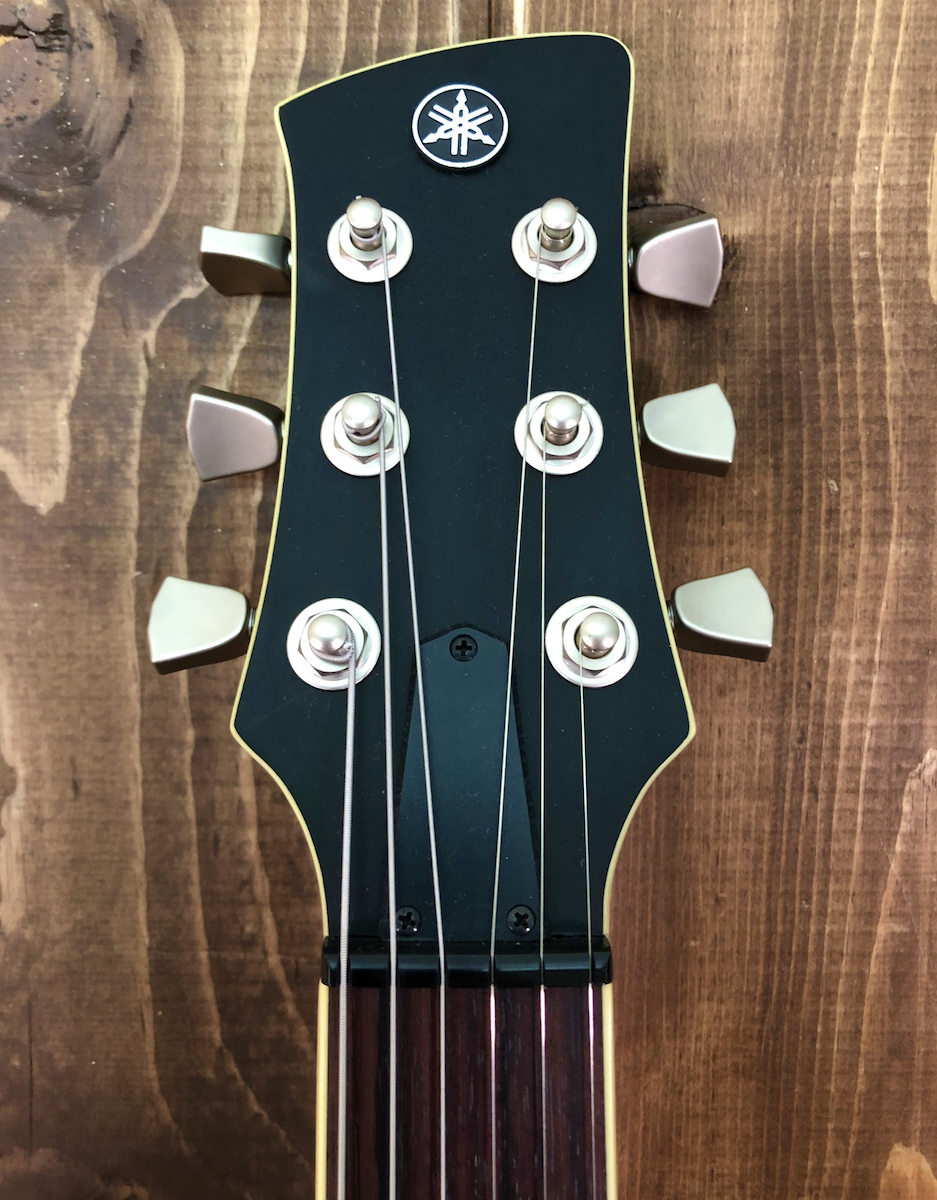
There are many nut options available and choices may vary from builder to builder and model of guitar. Bone, corian, plastic, urea and brass are common materials used, and each will have an effect on the guitar’s tone. The nut slots should allow the strings to glide freely between the tuning pegs and the bridge, and it’s imperative that they be cut with exacting precision for each string gauge to ensure perfect intonation along the entire string length.
String Spacing
The width of the neck — and consequently the nut width — will also determine the spacing between each string. Players with large hands and fingers may want to look for a wide neck with a larger string spacing. Alternately, if you have small hands and are struggling to facilitate chord voicings and scale shapes on a wide neck, a short-scale (24¾”) neck with a narrow nut width may be a consideration for you.
Truss Rod
An internal metal truss rod allows for fine adjustments of positive and negative bow (curvature) along the length of a guitar neck, which ideally should be as straight as possible. On modern guitars, the truss rod covers and the adjustment screws (normally via hex key) are typically found on the headstock; on older instruments, at the heel of the neck. If the truss rod is at the heel of the neck, the strings will need to be loosened to access the adjustment screws.
The Video
I recently filmed a promotional video for the Line 6 POD® Go guitar processor in which I played two of my favorite guitars: the Yamaha Revstar 720B and 502TFM. Both guitars have a full C-shape mahogany neck, rosewood fingerboard and jumbo frets with a 13″ radius. I also strung both with 10 – 46 gauge strings, which in my opinion provide the perfect string tension on guitars with a 24¾” scale length. String bends, intonation, tone and sustain are further enhanced by the neck-through body construction.
Notice also how easily I glide along the fingerboard to flow between scale patterns and how well the two guitars complement each other on those sweet harmony lead guitar lines.
The Wrap-Up
We spend a lot of time sleeping, so a comfortable bed is key to getting a good nights’ sleep. We also work lots of hours to earn a living, so choosing a job we love is advantageous to thriving in a career.
Our recreational guitar playing time is just as important to our general happiness, so making detailed and informed choices regarding the instruments we play will enhance our enjoyment and ultimate progress on the instrument. Trust me, the necks on the guitars you’re considering make a big difference, so choose wisely!
Photographs courtesy of the author.
Check out Robbie’s other postings.
Click here for more information about Yamaha Revstar guitars.
Click here for more information about the Line 6 POD Go.











